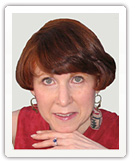e-Tips
Making the Most of Upside-Down Reporting Relationships
One workplace reporting relationship that used to be fairly rare is older workers reporting to younger managers. This is a growing phenomenon and will become more prevalent at least until the younger Boomers stop working in any form. As Boomers transition from leader and top expert roles to new roles that allow the next generations to move up the ladder, we will see what traditionally have been unconventional structures.
Though some people deal with it well, in many cases at best it is awkward, at least at first. At worst, it has led to lawsuits. But serious tensions and confrontations can be avoided.
Both the younger and the older parties to the relationship can feel uncomfortable. A new young manager may feel insecure and even intimidated. An older team member can be unsure of how to react as well. Having worked extensively with all the generations, I will offer some tips in 2 parts.
First, here are some guidelines for the older subordinate.
- Establish common goals. Focus on the purpose of your work.
- Be open to new ideas and methods. Don’t obsess on differences in how you were taught, what always has served you as the best method, or whether the manager has preconceived notions about how you think and operate.
- Be generous about giving advice – when asked. Create a non-threatening environment so you will be asked. Don’t be pedantic about advice and unsolicited opinions.
- Seek out younger co-workers, and learn from them in a mentoring partnership.
- Find opportunities to disprove myths and perceptions of older workers.
- Be appreciative of how your young manager gives you support and provides tools to allow you to achieve top results.
- Be clear about preferred communication styles and media and about appropriate boundaries.
- Identify the younger manager’s motivations.
- Be appreciative of recognition you are given, and reciprocate.
These tips will help start the relationship off on an even keel and minimize expending of negative emotional energy.
Next, what the younger manager can do to build a collaborative and non-threatening environment.
Above I provided guidelines for the more senior in age team member who is assigned to work for a younger supervisor. Sometimes this happens after a long career, possibly including leadership positions. The demographics of the current and future workplace are resulting in some unconventional structures. The younger manager, though ostensibly in charge, may feel as awkward as the older colleague. Even if not feeling insecure in the role, there are things the younger manager can do to foster a harmonious and productive relationship.
Here’s some advice to promote trust and cooperation
- Keep in mind the purpose of your work. What are the common goals for team members?
- Show respect for experience. (Some day you will be the experienced, older person.)
- Ask for advice, even if you think you know what the best approach is. Invite input and listen.
- Build allies among the older generations on your team for advice and support.
- Surmount “just a kid” perceptions through your performance and involving others. Use your collaborative skills and don’t make a show of coveting praise and credit.
- Get your older team members what they need to do their jobs well – resources, approvals, etc. (That will help them make you look good.)
- Give seasoned team members freedom, but establish boundaries and communications requirements upfront.
- Identify what motivates each individual and what type of recognition is meaningful to each.
- Give appropriate credit to others and arrange for their recognition.
A solid and harmonious relationship with older colleagues will pay off in spades for building the younger manager’s career. It can provide access to (often high-powered) networks, and increase organizational success. Demographics indicate that this is the wave of the future.
What do you think? Please send your thoughts on these observations to me at pwhaserot@pdcounsel.com or comment on www.nextgeneration-nextdestination.com.
Phyllis
© Phyllis Weiss Haserot, 2011.
Help your colleagues: If you liked this article, please share it with your colleagues and friends, Tweet it Retweet it and “Like” it on your social media. Be sure to include the copyright, © Phyllis Weiss Haserot, 2011 and www.pdcounsel.com.
* The generational chronology for easy reference: Generations are defined by the similar formative influences – social, cultural, political, economic – that existed as the individuals of particular birth cohorts were in adolescent-early adult years. Given that premise, the age breakdowns for each of the four generations currently in the workplace are approximately:
Traditionalists: born 1925-1942
Baby Boomers born 1943-1962
Generation X born 1963-1978
Generation Y/Millennials born 1979-1998
Phyllis is available to speak at your organization or at firm retreats on inter-generational relations and organizational effectiveness topics. Call 212-593-1549 or e-mail pwhaserot@pdcounsel.com for a list of topics or to custom-tailor your own.
Check out *Next Generation, Next Destination*, our blog about succession, transitioning and multi-generational talent management. Visit, comment and subscribe by RSS feed or e-mail. http://www.nextgeneration-nextdestination.com.

